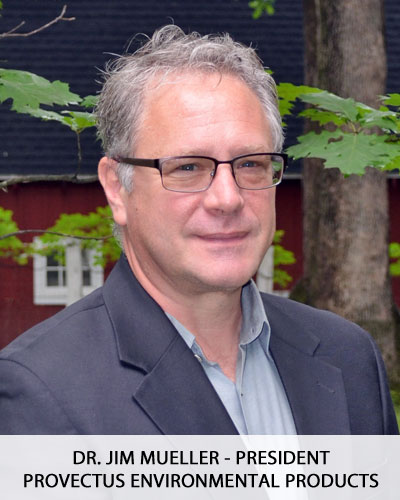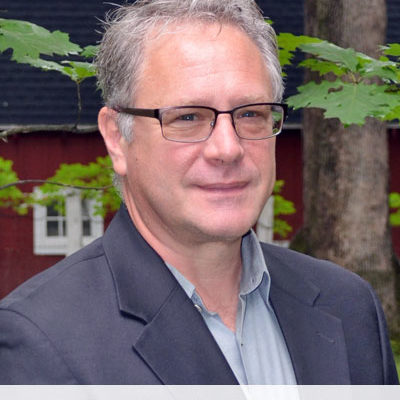The environmental engineering community is notoriously skeptical of new technology, somewhat resistant to change, and sometimes difficult to influence. I suspect this is mainly because many of us have seen bad technologies fail – sometimes majestically. I knew well from past experiences that the development and commercialization of a new environmental biotechnology addressing an issue that not everyone appreciated was going to have its difficulties. If you are interested to learn how our industry responded to these new concepts and thought-challenges during our first year of operation.
As we discussed with you Provectus’ technologies during workshops, technology transfer sessions, conferences and webinars the potential benefits of actively controlling methanogens during ERD and ISCR remedial actions were readily understood and generally accepted by most audiences. Namely: i) improved efficiency (first and foremost benefit), and ii) safer remedial actions via reduced potential for methane accumulation, induced migration of VOCs, and generation of secondary plumes caused by methylation of heavy metals. Simultaneously, I had the benefit of detailed interactions with genuine experts in the fields of microbiology, biogeochemistry, indoor air /vapor intrusion, and others so I know that these issues are very real, very important, and very valid to discuss. However, not all interactions went swimmingly.
On one extreme, some of the commodity technology vendors (especially those led by individuals with minimal formal scientific training) were surprisingly unprofessional and openly antagonistic to the thoughts of improved efficiency and safety. I came to recognize that the challenge for them was a refusal/inability to accept the message of improved efficiency because “better gas mileage” translated into reduced product sales. Here, the lesson was rather simple: “You can never please them all – Welcome to the MethaneZone.”
Another technology vendor recently offered a balanced analysis of methanogenesis under conventional ISCR conditions. Written by an experienced scientist, this document presented useful information in a semi-factual manner. However, it seemed to lack practical understanding of a real-world, 3-dimensional aquifer under induced ISCR conditions. For example, noting that ferric iron can inhibit methanogens under laboratory conditions is true and interesting; but making the assumption that similar responses will be observed during a field-scale ISCR application seems flawed because: i) there is sufficient carbon to support multiple microbial processes, and ii) by definition of ISCR the environment is (very) reducing hence the concentration of ferric iron is predictably very low. There are other examples of unreasonable extrapolation (e.g., the presence of ZVI was recently shown to increase methanogenesis – see https://provectusenvironmental.com/marketing/tech_docs/LiuWangZhangNi15.pdf), but deliberation here is tedious and frankly I have reviewed enough data sets from past field projects employing conventional ERD and ISCR amendments to know well that the most appropriate response is this: “Look for yourself – See how much methane was generated during your past projects, and be sure to reality check vendor claims by looking at methane generation during future projects.”
A long term friend and colleague shared with me the following story: The FIDO dog food company recently held its annual shareholders meeting. At the appropriate time, FIDO’s CEO took the podium. “I want to ask you something,” he said. “What is the greatest dog food company in the world?” The employees bellowed “FIDO!” “What dog food company offers the best salaries and fringe benefits in the dog food industry?” Again the crowd roared their answer: “FIDO!” He went on. “What dog food company has the most numerous, well-trained sales staff in the world?” They responded – with gusto – “FIDO!” “Well then,” he continued, “Why is it then that out of 18 dog food companies, we rank 18th in sales?” From the back of the room, a single voice was heard: “The dogs don’t like it!”
Last year I felt like I was that single voice. But more people join the choir each day, and the menu of remedial technologies is improving.
This month marks our one year anniversary at Provectus Environmental Products, Inc. Over this short period of time, we made significant improvements to proven technologies, namely Provect-OX™, EZVI-CH4™ and AquaBlok-CH4™. In addition, we introduced a new concept to our industry – active control of excessive methanogenesis – using our Provect-CH4™ methane inhibitors as supplements to carbon amendments and/or integrated into our antimethanogenic ERD reagents (ABC-CH4™) and antimethanogenic ISCR technologies (Provect-IR™ and Provect-IRM™). Overall most clients, regulators, site owners, and industry practitioners appreciated our message and embraced the concepts inherent to our technology advancements.
Stay tuned for more exciting changes! Onward and Upward.


